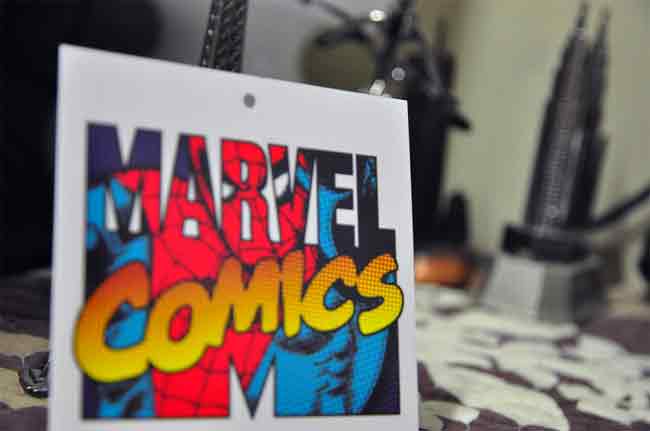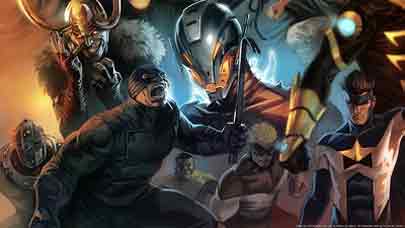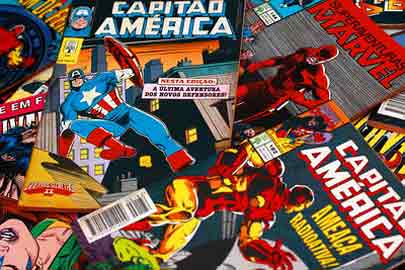Marvel Comics: The Early ’80s Creative Side: The Dark Phoenix, Daredevil, and Thor by the Masters

While Editor in Chief Jim Shooter and Marvel Comics President James Galton were revamping the way Marvel rand, did business, and was structured in the 1980’s, the writers and artists of the company’s fabled Bullpen were revolutionizing the art form itself.
Chris Claremont and the Dark Phoenix

The start of the new decade saw X-Men scribe Chris Claremont begin a several issue story arc dealing with Jean Grey losing control of her phoenix powers. Claremont’s penciler on the story was John Byrne whose crisp clean art deftly complimented Claremont’s intricate storytelling.
Claremont and Byrne still employed the time honored Marvel Method for producing comics (where a script is given to the artist to flesh out and then the writer writes dialogue and exposition) and it altered the X-Men forever. When doing the art for X-Men #135, in which the Phoenix becomes Dark Phoenix and devours a star, Byrne, for whatever reason, added an extra panel.
That panel added a populated planet to the stars solar system, effectively making the Jean Grey a mass-murderer. When Jim Shooter got wind of it he pulled the X-Men’s editor, writer, and artist into his office and demanded consequences for the character. Claremont had originally intended for Grey to be exorcised of the Phoenix, but by the end of the meeting it was decided that she had to die.
The decision angered Claremont, but it became a critical and financial success and is still looked at as one of the defining stories in all of comic books.
John Byrne Revives the First Family
John Byrne’s work, with Claremont, on X-Men gave him a feel for how a creator could revamp an older property. With that experience, Byrne left X-Men, in 1981, to revamp The Fantastic Four. Byrne took it upon himself to do the writing, penciling, and inking on the series so that he would have total control of the product.
Byrne’s work met with industry and fan support and the era of the one man creative team, a cornerstone of the Golden Age, began to blossom again.
The Importance of Being Frank

The next one man band on the scene was Frank Miller. Miller, who started as the artist on Daredevil before taking over the series’ writing as well, took a darker view of the Marvel Universe. His art was stripped down to light and shadow, forcing the readers to draw out what was happening, to involve themselves more deeply. Miller’s writing was tense and layered; he brought a depth to their motivations.
Soon his work was a hit, with his stylings of Daredevil, the Punisher, and Wolverine elevating the characters out of the shiny and heroic world of everyday comics and fixing them into a gritty, streetlamp lit sort of world that felt much more real. Miller became the star to watch.
Comics Become Novels
Inspired by the work of Stan Lee and Jack Kirby on their deluxe The Silver Surfer masterpiece, Marvel launched a new line of books in the same vein, called Graphic Novels. The first of these, The Death of Captain Marvel, told the story of a superhero who falls not in battle, look at here now.
At once both deeply intimate and vastly cosmic in scope, The Death of Captain Marvel set the standard by which all later Graphic Novels would be judged.
The Thunder God Gets a Makeover
In 1983 The Mighty Thor was not selling very well. Writers had trouble finding the right voice for the book and artists the right flavor. One man changed all of that. Walt Simonson took up the writing and art on The Mighty Thor with issue #337. Simonson’s first issue stood out so dynamically from the previous work on the character that it sold out immediately.
There was an aura of mythic grandeur to all of Simonson’s work on Thor, but that wasn’t all he brought. Fantastic sci-fi space stories meshed seamlessly with that ancient feel, while tales of earth held a modern grimness. Thor felt, for the first time, like the book should feel, like a mixture of the greatest the universe had to offer, brought to earth and interacting with man.
Marvel was experiencing a renaissance and fans responded by pushing the company to new heights of profitability.
